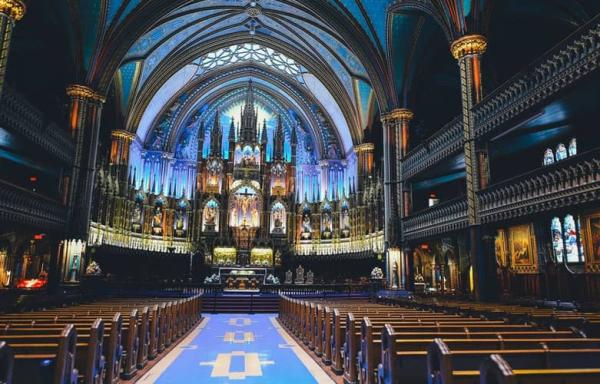New Notre Dame Roof and Steeple to Be Designed by the People
- May 9 2019
- 3 min read
New Notre Dame Roof and Steeple to Be Designed by the People

Following the fire that destroyed famed Catholic church, Notre Dame, the French government has launched an international architectural competition to redesign the church's roof and spire.
One of the many designs that have flooded in is from Belgian Ecological Architect Vincent Callebaut. His design sees the roof turned into a garden, covered with a glass steeple.
This project, known as "Palingenesis," aims to include the stone nave. It will blend in naturally as a "graft" that harmonises the roof and spire together. From the four gables, the original geometry of the 10 meter (about 33 feet) high attic would be respected.
Respect the planet by purchasing eco-friendly, sustainable promotional items for your business at Custom Earth Promos.
It will be constructed with cross-laminated timber (CLT) beams prestressed with carbon fibers. The new oak frame seeks to use the most minimal amount of material possible. This is to ensure a low-carbon footprint while still offering the greatest transparency possible to the cathedral.
Lower your carbon footprint by using reusable bags and bottles instead of single-use plastic.
The rooster statue that once crowned the building, which was found among the rubble the day after the incident, will crown it again. In its new position, it should remain the "spiritual lightning rod" and protector of the faithful.
Callebaut revealed that the new design "evokes the rebirth but also the mystery of the cathedral and the resurrection of Christ."
The idea is to use this new "graft" to turn Notre Dame into a positive energy building; one designed to produce more energy than it consumes. The contemporary, three-dimensional Gothic, stained glass "graft" produces all of the electricity, heat, and passive ventilation that the building may require. This is accomplished by combining passive systems and advanced renewable energies.
The wooden frame will be covered with a three-dimensional crystal glass dress that will be subdivided into faceted diamond-shaped pieces. The crystals consist of an active organic layer, made of carbon, hydrogen, nitrogen, and oxygen, which will absorb light and turn it into power. This energy, which will be stored in hydrogen fuel cells, will be distributed throughout the cathedral.
To avoid any greenhouse effect(s), the crystal diamonds open at the acroterion of the nave and transept. This will create a natural air flow towards the top of the spire, mimicking a wind-powered chimney.
The project features an internal garden devoted to contemplation and meditation. Up to 21 tons of fruits and vegetables could be harvested and distributed for free each year. A farmers market could be held each week on Notre Dame's forecourt.
Start your own garden with seed paper. Once buried and soaked, this paper will turn back into a plant.
"In conclusion, we advocate for an exemplary project in ecological engineering that feels true to its time and avoids a pastiche architecture that turns the city into an open-air museum. Circular economy, renewable energies, inclusive social innovation, urban agriculture, protection of biodiversity, without forgetting beauty and spiritual elevation: our reconstruction project feeds on such values to deliver a deep, conscious meaning."
Belgian Ecological Architect Vincent Callebaut
Gain access to Orders, Tracking, Custom Options and Much More!